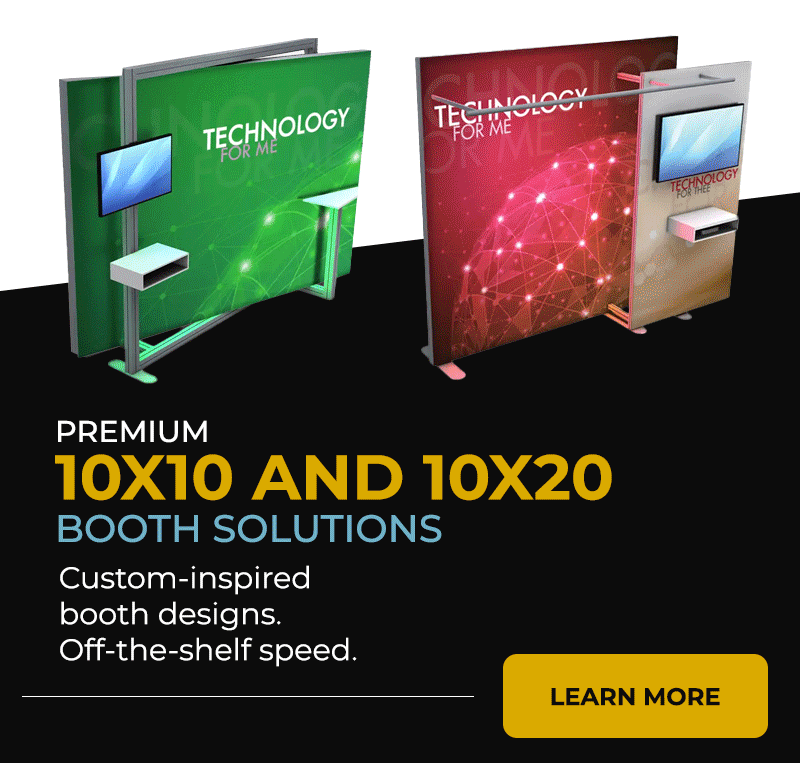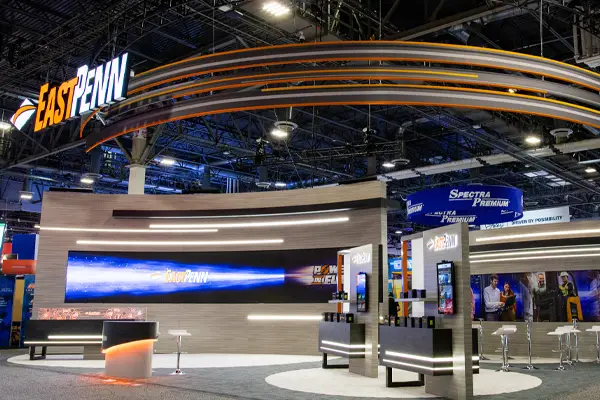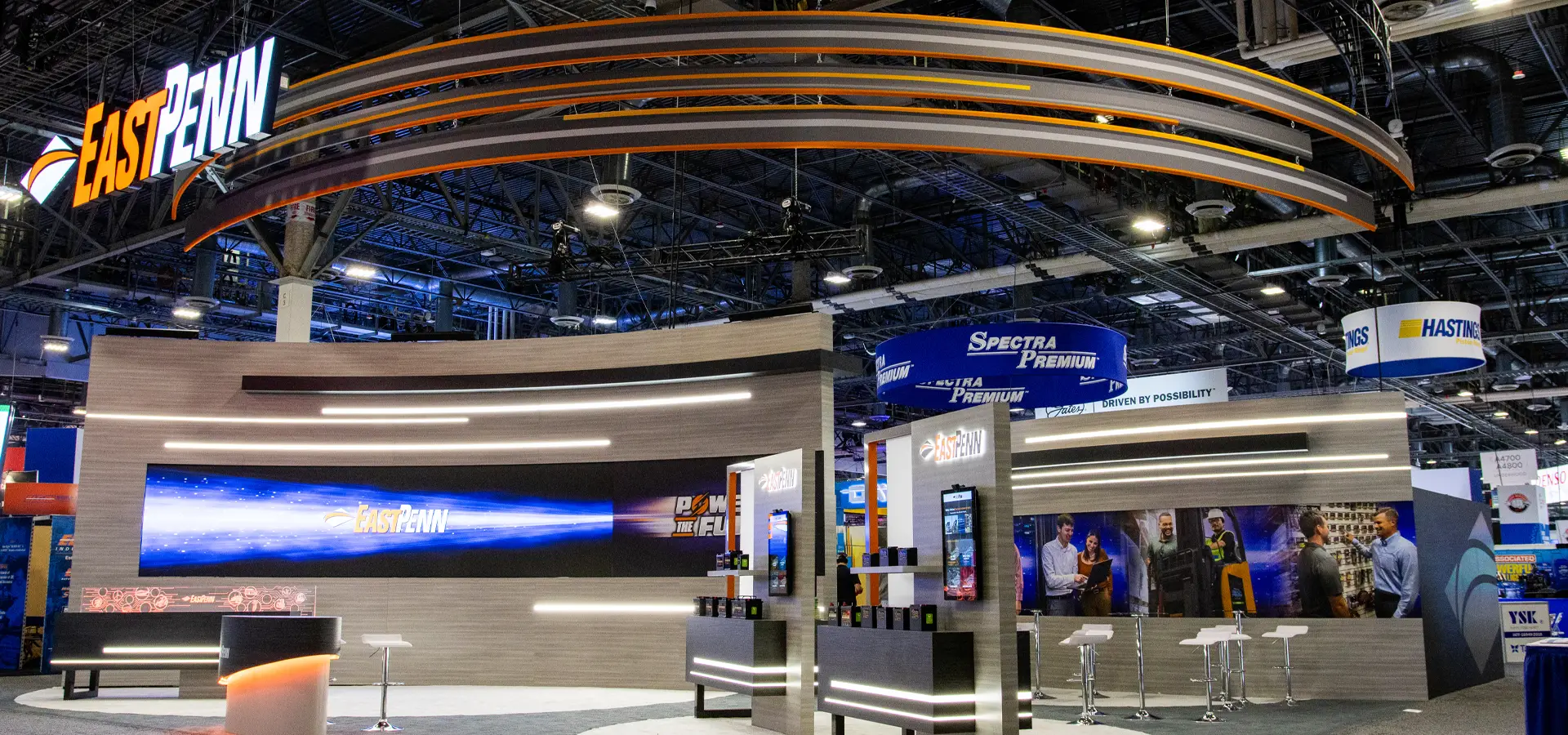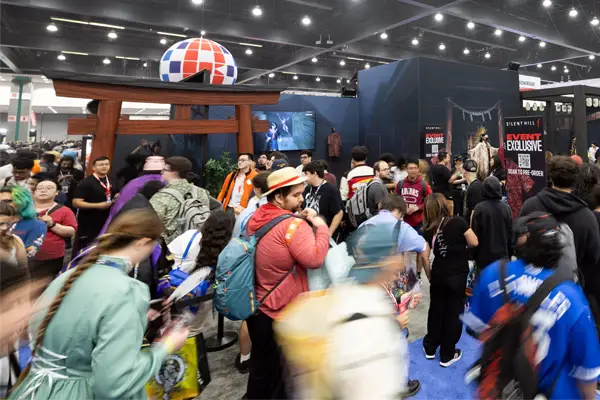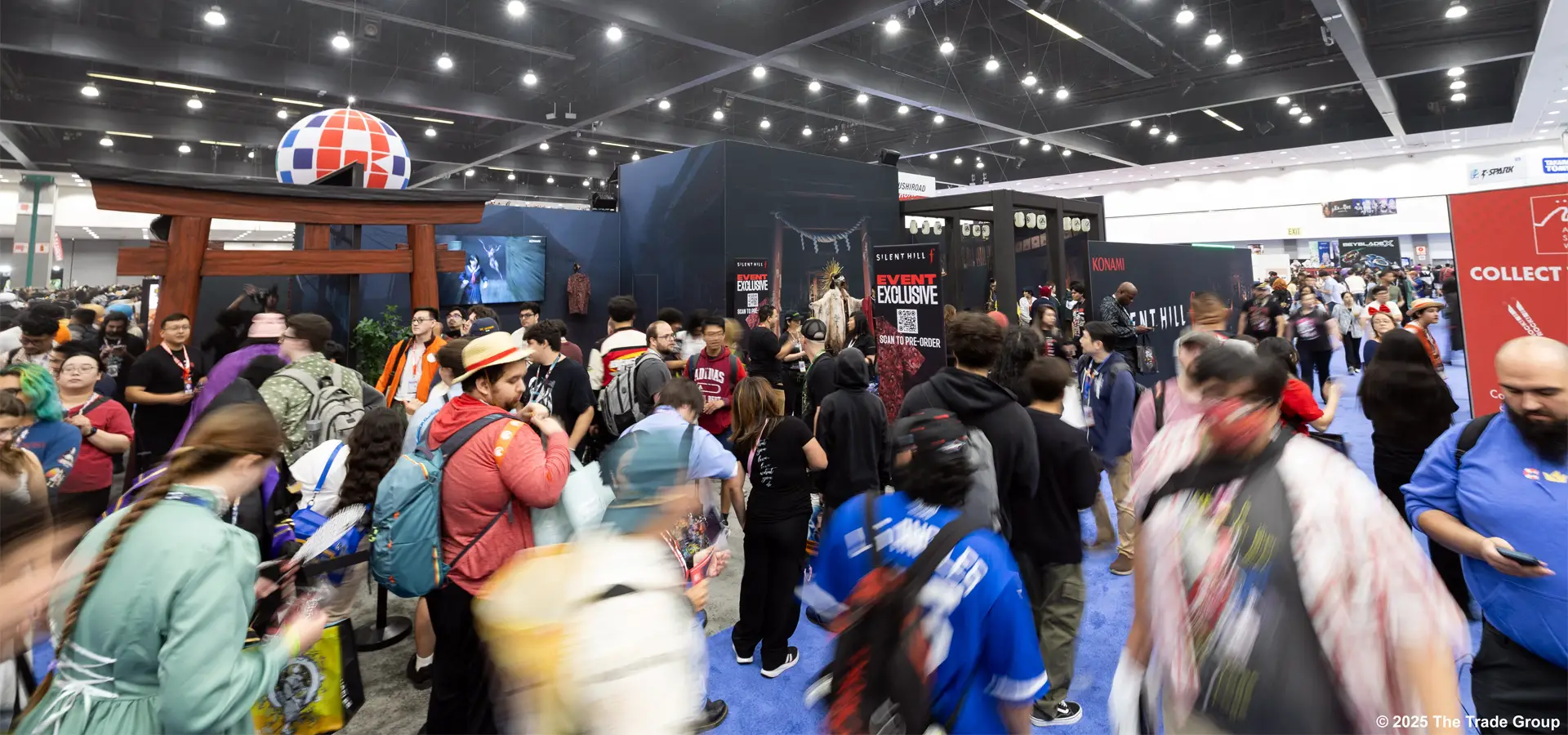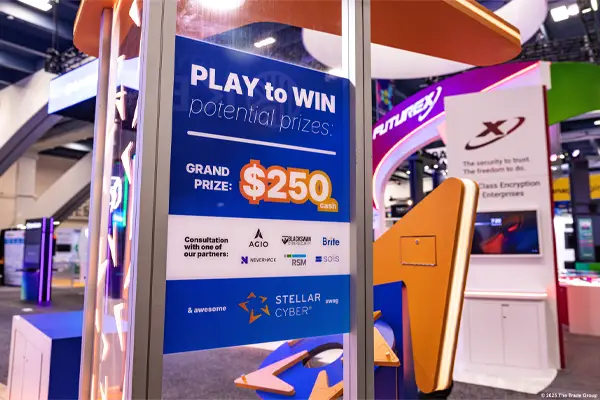When marketing your business at a trade show, you have an (almost) endless array of options. The key is to identify which ideas and tactics will effectively capture your offering and attract QUALIFIED leads—not just foot traffic.
We know from firsthand experience what works and what doesn’t. That’s why we’ve put together this article on nine tried and tested marketing and sales tactics for exhibitors.
Some of these tactics you’ve probably come across before; others you may be encountering for the first time.
If you can bring even one of these tactics to your next show, we’ve achieved our goal.
By the time you’re done reading, you’ll step onto the trade show floor with total confidence in getting deals over the line.
1. Determine your desired ROI and budget
This tip should be self-explanatory for anyone who’s attended a trade show, but it’s crucial to nail down the fundamentals before you move forward with your booth design, marketing strategy, and briefing your sales reps.
Let’s start with ROI. Here are some questions you may want to consider if you haven’t already:
- What is your goal? Is it to retain existing customers who you’ll meet at the show, attract new ones, increase brand awareness, or all three?
- What is the average transaction value that you expect each converting attendee to spend?
- How much is a new customer worth to your business in pure profit, on average, across a 12-month period?
- What is your target conversion rate at your next show?
- What sort of budget do you have for booth design, labor, and show-related marketing expenses and staffing costs? Try and land on a ballpark figure if possible.
- How many deals would you need to close at the show to make this figure back?
- What is the value of current revenue retention?
- What is the value of current revenue growth?
It’s also worth researching what your competitors are doing and where there are potential gaps you can exploit in your brand messaging, design, and general marketing collateral.
Everybody in your sales and marketing departments needs insight into this information so that the tactics and strategy are aligned from the word ‘go.’
2. Choose a look and feel that aligns with your marketing strategy
How you describe your company needs to match up with how you present your company on the trade show floor.
We’ve encountered many instances where a company professes to be XYZ, yet its marketing gives off a totally different vibe.
This misaligned look and feel will only confuse potential customers, which is fatal given that they’ll typically decide within seconds whether or not they want to stop at your booth.
That’s why working alongside a strategic trade show partner is so important.
They’ll ask about your origin story, target market, key differentiators, pain points, past exhibiting mistakes, trade show goals, and so on.
The end result is a storytelling asset that truly represents your business and brings to light the little details that make it so special.
And, of course, you can repurpose your booth’s creative concepts across all of your marketing activity to whet the appetites of show attendees.
For example, if you’re planning on drumming up anticipation through a series of Instagram posts, these should feature snippets of the graphics provided by your exhibit house. But be selective over what you share—you want to provide a sneak preview, not give everything away.
Once your visual identity and messaging are aligned, you can amplify their impact by incorporating features that bring your story to life and create memorable experiences.
3. Consider value-added features to help you stand out
Adding certain features to your booth will not only set it apart from competing booths but also make marketing your products and services easier. These features do much of the legwork on your behalf by hooking people in and generating valuable interactions.
Here are just some of the ways you can make your booth stand out on social media and, most importantly, on the show floor.
Digital and interactive features
We’ve written an entire article on how to enhance your trade show booth with digital and interactive features, so we won’t go into too much detail here. But here are a couple of examples of features that you may want to consider.
Kinetic video tiles: These are small, motorized LED or LCD panels arranged in a grid. They can tilt, rotate, or shift in synchronization with video content or attendee movement. The video below shows this incredible feature in action. We rolled it out for Abnormal AI, a leading AI-native human behavior security platform.
Translucent video screens: These allow attendees to see both the digital content and the people walking behind the screen, building intrigue and giving them the full picture of what’s going on..If you went with this feature at your next trade show, you could include oversized text that appears in fade-in and fade-out transitions to attract attention.
Gamification
Making someone feel intrigued and entertained is a giant step towards initiating meaningful conversations that boost your business’s bottom line.
Again, we’ve already written an article on this topic, but in summary—you can bring the benefits of your product or service to life in any number of ways, from gameshow-style experiences to prize walls.
Product demos
These are often one of the main reasons people attend a trade show in the first place. Sure, they can research them online, but being able to touch, feel, and see the products in person is infinitely better. This makes them feel special and part of an exclusive experience. That's why allowing attendees to try before they buy could reap huge rewards.
4. Build anticipation among your target audience
Imagine investing huge amounts of money and time preparing for your next show only to turn up and hardly any of your warm leads know you’re there.
Your competitors might make this oversight—but you can’t afford to.
You need to be at the forefront of people’s minds the moment they step onto the show floor.
You’ll achieve this through a combination of clear, consistent marketing and strategic communication from your sales team.
Let’s break each of these things down.
Consistent marketing might look like:
- Weekly social media posts for around one to two months before the event letting people know you’re attending and outlining what they can expect from you at the show (ideally multiple posts per week, or even per day closer to the event).
- A series of emails that alert recipients to your forthcoming show attendance while addressing common customer pain points, objections, and needs (you can cover all of this in one email).
- A preview video on your YouTube channel featuring interviews with the booth staff, which you can also share on social media and in your marketing emails.
Strategic communication, on the other hand, could be:
- A quick courtesy call to prospects (particularly those classified as ‘warm’ leads) to alert them to the fact you’ll be at the show and let them know which stand you’re at.
- Offering strategic giveaways that can only be picked up at the show if attendees have a ticket.
Even if you do half of the things listed above, you’ll be one of the first names attendees think of when they decide which stands to visit.
5. Practice qualifying leads as A, B, C leads
The clue is in the title.
You score each lead you attract at a trade show from A to C, with A leads being the most qualified and C leads the least qualified.
An A lead is someone who fits your Ideal Customer Profile (ICP). They have a clear need for your product or service, have expressed a strong interest in it, and have the authority to make budgetary decisions.
A B lead is someone who is moderately engaged and qualified, but there’s no definitive timeline as to when or if they’ll buy from you. They’re researching their options and plan on initiating a purchase in the next 3-6 months, but they may not have the authority to sign off on any potential deal.
A C lead is someone who’s shown interest in your product or service but is otherwise a poor profile fit. They don’t have many, if any, of the qualifications or characteristics needed to align with your ICP.
Having this scoring system in mind before you attend your next show saves a heck of a lot of time, both at the show and in the follow up.
Instead of spending hours sending out emails and LinkedIn connection requests to C leads after the show, you’re dedicating this time to following up with A leads.
6. Ask the right questions
This tactic builds on the previous one, as asking the right questions allows you to more quickly qualify which attendees are your ideal customers.
Here’s one basic question you can ask when someone walks by your booth or approaches you and shows an initial interest in your offering:
“What are you looking for today?”
You’ll be able to judge within seconds, from their answer to this question and overall body language, whether you should engage them further or start to disengage and focus your attention elsewhere.
If they initially appear to be a suitable prospect, you can explore questions such as:
- What challenges are you currently facing with regard to [insert specific pain point]?
- How long has this problem been going on?
- How is this impacting your business?
- What results would you be looking to achieve by investing in our solution?
- What is your budget and desired timeline?
These questions will generate meaningful conversations that allow you to establish who has a pressing need for your products while positioning you as a problem-solver, rather than merely a vendor.
7. Perfect the pitch
Putting yourself in your ideal customer’s shoes is marketing 101.
If you’re them and you’re talking to a company rep at a trade show—what would you want to know?
Well, you’re probably not that interested in the fact that the company is award-winning, results-focused, and passionate about whatever product or service they’re selling.
You really just want to know what’s in it for you.
We started this article by explaining what you get out of reading it—not by talking about ourselves.
That’s exactly what your show reps should be doing.
Prospects don’t care about what your business does. They care about what it does for them.
We cover this in much more detail in the below article.
Related: 3 Tips For Pitching Effectively At Trade Shows
8. Master the follow-ups
Imagine the perfect scenario.
You showed up with a kick-ass booth, your marketing team posted some amazing content, your sales staff nailed their conversations, and you walked away with a list of highly qualified leads.
This scenario typically leads to one of two outcomes.
- You capitalize on your positive conversations through strategic, personalized communication to remind your leads why you’re worth buying from.
- You wait weeks or months to contact these leads, at which point their priorities may have changed or they may have gone with a competitor, or you bombard them with follow-ups and emails before they’ve even had a chance to catch a breath.
Clearly, outcome number one is preferable.
That’s why having a solid, tactical follow-up strategy in place before you even arrive at the show is vital.
So, too, is utilizing a proper Customer Relationship Management (CRM) system that allows you to manage the data you collected. The more efficient your data management, the easier you’ll find it to determine when and how you’ll follow up with your leads.
Related: 7 Best Trade Show Lead Capture Apps
9. Content equals enhanced credibility
This is essentially tip number four flipped on its head.
As well as building anticipation ahead of the show, your marketing needs to keep people sweet after the show. Otherwise, all the time you spent drumming up interest was for very little.
The hard yards your sales team puts in to close deals can only get you so far. The marketing team also needs to step up to the plate to help build credibility and raise brand awareness.
Here are some examples of post-show marketing content that will do just that:
- Bespoke emails for your A leads along the lines of ‘We enjoyed meeting you at the show,’ with more information about the benefits of your product or service and a bit of background on the company itself.
- A post-show press release for the trade media summarizing what you brought to the show and the deals you secured (if you’re permitted to share this information).
- A series of daily diaries from the show for platforms such as YouTube, Instagram, and TikTok.
- Photos and text-based posts for social media.
The more marketing content you have, the more your salespeople have to share with their leads, and this could be the difference between a deal going through or not.
They can also share this content on their social media platforms, which could have positive long-term implications.
Even if the people you met at the show don’t see any of this, the people you meet at the next show just might.
You’re playing the long game.
Set yourself up for sales success with The Trade Group
We’ve been a full-service trade show and event marketing company since 1986 and our extensive sales and marketing teams put in amazing work behind the scenes. So, we very much practice what we’ve preached in this article.
With us by your side, you’ll have the most visually appealing assets, strike up the strongest conversations, and bring in the best quality leads.
Interested in partnering with us? Send us a note here or give us a call at 800-343-2005 to get the ball rolling.


